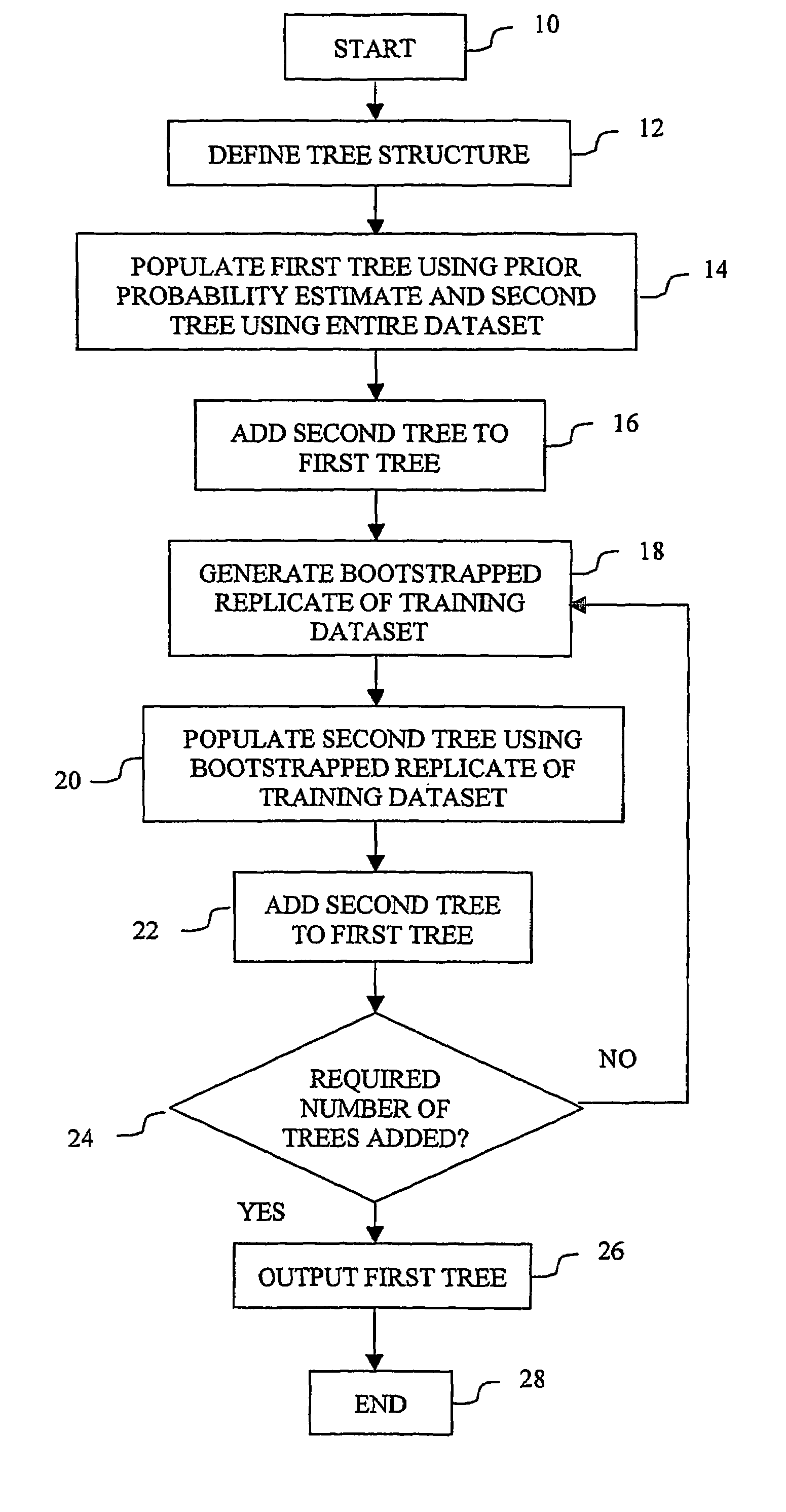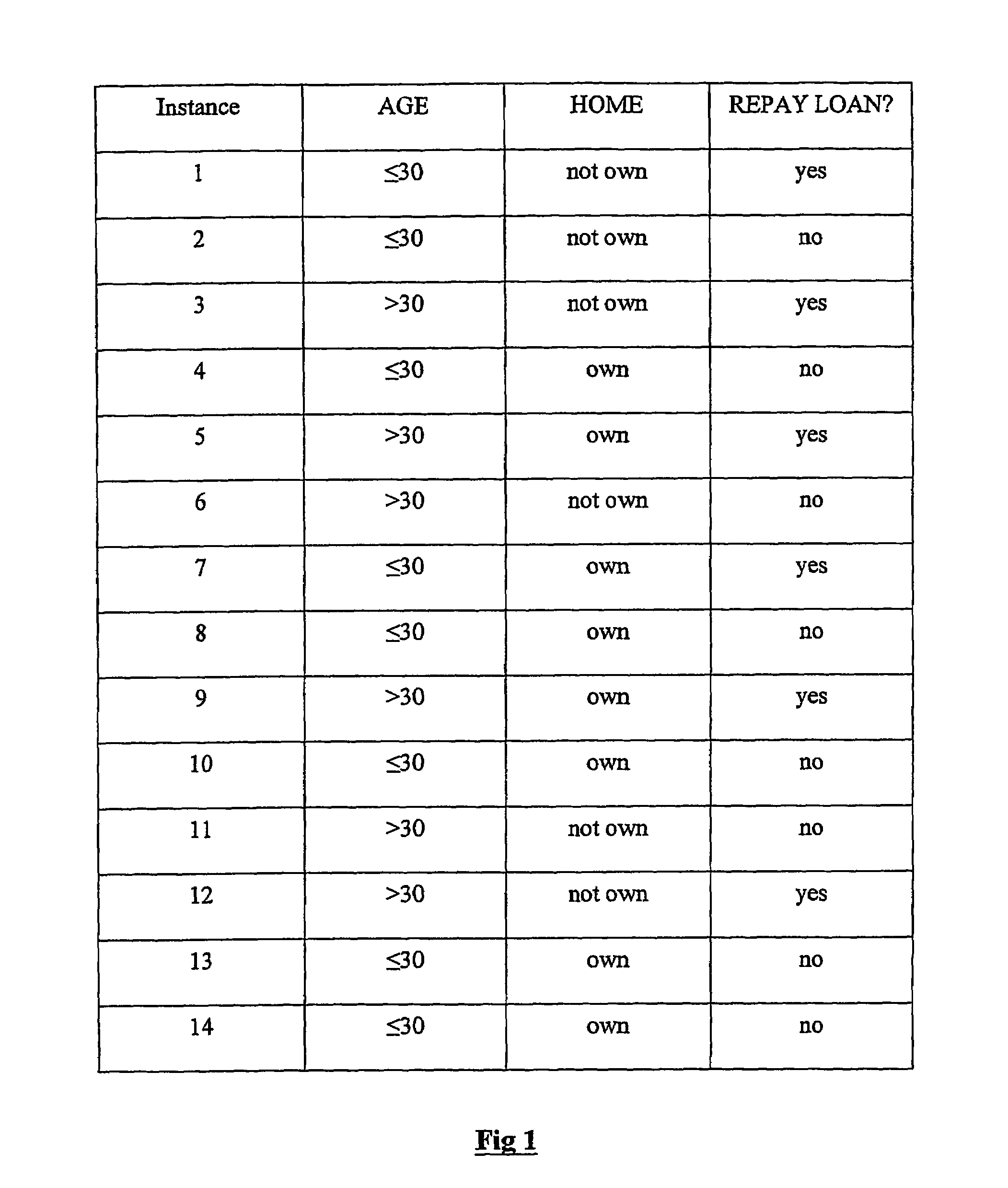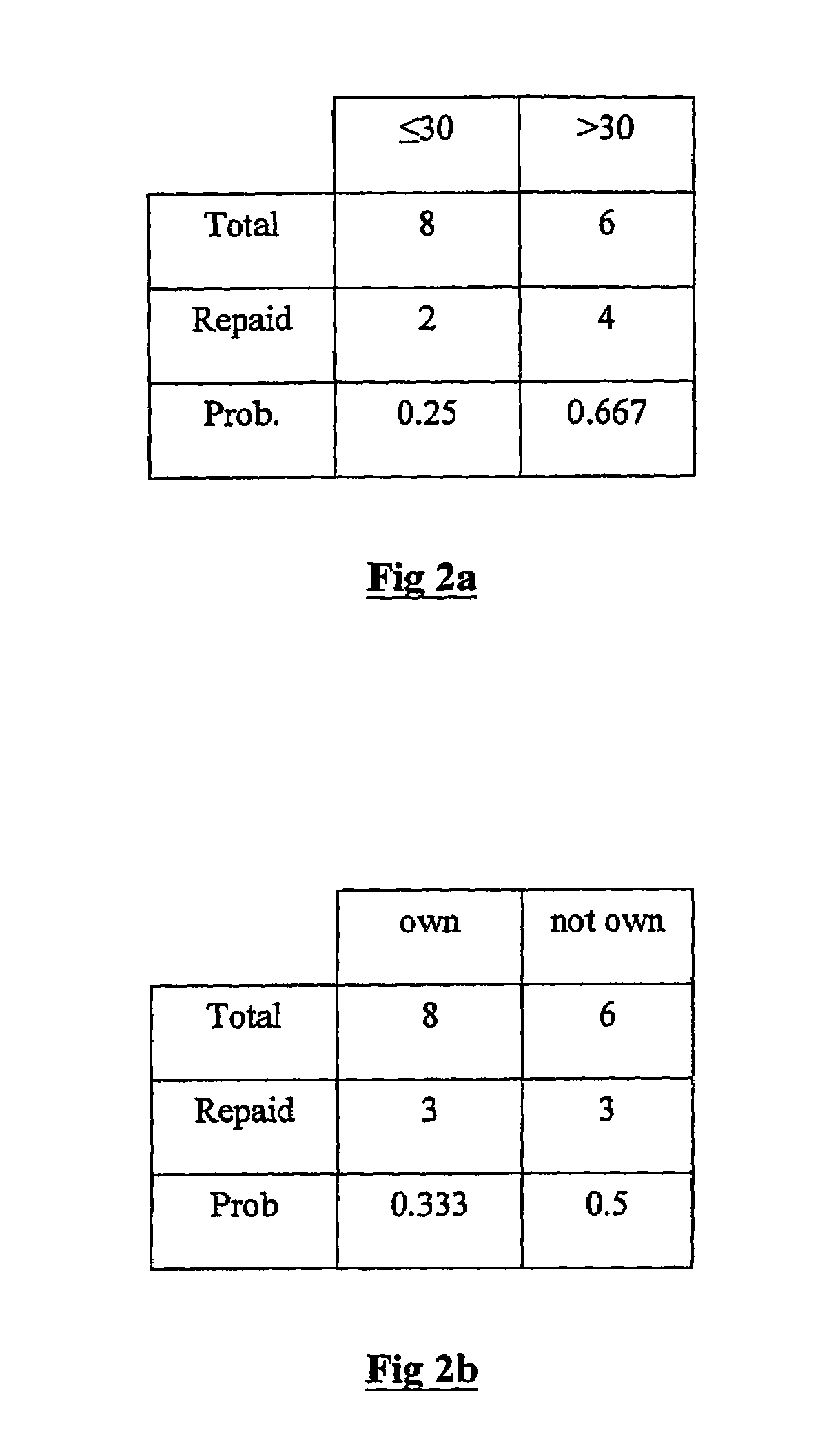Classification using probability estimate re-sampling
a probability estimate and resampling technology, applied in the field of classification using probability estimate resampling, can solve the problems of overfitting the training dataset, inaccurate decision tree models, and less than optimal in general
- Summary
- Abstract
- Description
- Claims
- Application Information
AI Technical Summary
Benefits of technology
Problems solved by technology
Method used
Image
Examples
Embodiment Construction
[0073]The method followed by the present invention is best described by first illustrating it using a further simplified version of the bank loan problem. Recall that there are only two attributes in this problem—AGE and HOME—and these each have only two possible attribute values—‘≦30’ and ‘>30’, and ‘own’, ‘not own’ respectively. Let us now further suppose that there are only 14 instances in the historical training dataset of previous bank loans. This will make it simpler to follow the mathematical computations performed. These instances are set out in the training dataset table of FIG. 1. The instances have been chosen to exhibit similar non-linear patterns to that described above. For each of the two attributes, the method will:[0074]1) estimate the posterior probability of class membership given each respective attribute value, using the entire training dataset;[0075]2) re-index the training dataset table using the probability estimates instead of attribute values;[0076]3) bin e...
PUM
 Login to View More
Login to View More Abstract
Description
Claims
Application Information
 Login to View More
Login to View More - R&D
- Intellectual Property
- Life Sciences
- Materials
- Tech Scout
- Unparalleled Data Quality
- Higher Quality Content
- 60% Fewer Hallucinations
Browse by: Latest US Patents, China's latest patents, Technical Efficacy Thesaurus, Application Domain, Technology Topic, Popular Technical Reports.
© 2025 PatSnap. All rights reserved.Legal|Privacy policy|Modern Slavery Act Transparency Statement|Sitemap|About US| Contact US: help@patsnap.com



